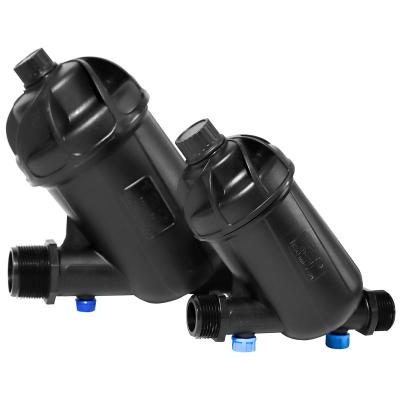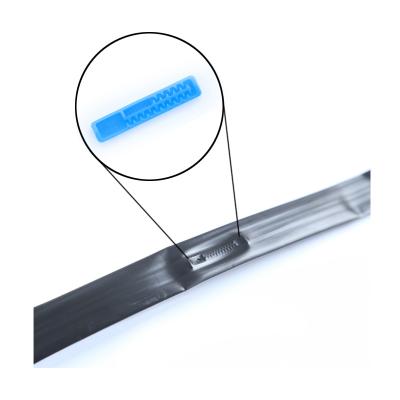Micro-irrigation and Fertilization Technology of Green Pepper in Greenhouse
Micro-irrigation and fertilization is a water-saving, fertilizer-saving, and high-efficiency agricultural production technology that uses a fertilization device to inject fertilizer into the micro-irrigation system under the condition of pressurized water source, and uniformly and stably transports it to the soil in the root zone of the crop at a small flow rate.
2. Micro-irrigation and fertilization facilities
The micro-irrigation system is generally drip irrigation. Each row of watermelons is laid with a drip irrigation pipe. The distance between the drippers is preferably 30cm, which can fully meet the watermelon's water and nutrient needs. Please refer to the relevant specifications for installation and use. The fertilization device is generally a differential pressure fertilizer tank or a Venturi fertilizer applicator. If the irrigation flow in the shed is greater than 3.5 cubic meters per hour, a Venturi fertilizer applicator should be used as much as possible; a fertilizer injection pump (or an electric sprayer) can also be used. Fertilizer suction before pump can be used for irrigation with centrifugal pump.
1. Fertilizer requirements: it can have the following characteristics at room temperature: full water solubility, full nutrition, no antagonistic reaction between elements, no precipitation when mixed with other fertilizers; no drastic changes in the pH of irrigation water; The system is less corrosive.
2. Commonly used fertilizers: solid fertilizers with good water solubility or high-concentration liquid fertilizers, such as urea, potassium dihydrogen phosphate, potassium nitrate, ammonium nitrate, potassium chloride, etc., or use "Christmas tree", "Ruth" and "hyacinth" and other series of water-soluble fertilizers. It is recommended to choose formula fertilizer according to different crops and different growth periods.
4. Micro-irrigation and fertilization program
1. Micro-irrigation scheme: water once in time after planting, and furrow irrigation can also be used. After slowing the seedlings, drip irrigation can be used depending on the moisture content. Generally, drip irrigation is 1~2 times at the seedling stage, 10~12 cubic meters/mu each time. After the fruit has swelled, it is watered every 7~10 days, 8~10 cubic meters/mu per mu. .
2. Fertilization plan: After planting slow seedlings, apply 20-20-20 drip irrigation special fertilizer for "Christmas tree" 3-5 kg per mu each time, pay attention to water control during the first flowering period, and start when green peppers grow to the size of walnuts Apply "Christmas tree" 19-8-27 special fertilizer for drip irrigation, and apply fertilizer every 7-10 days, adding 5-8 kg/mu of fertilizer each time,
Five, micro-irrigation and fertilization operation
1. Irrigation operation
When irrigating, close the valve on the fertilization tank (apparatus), fully open the control valve of the branch pipe of the drip irrigation system, and irrigate according to the micro-irrigation plan. Shut off the power at the end of irrigation, then close the control valve immediately. The wetting depth of drip irrigation is generally 30 cm. The principle of drip irrigation is a small amount of time, do not extend the time of drip irrigation to achieve the purpose of more irrigation.
1. Irrigation operation
When irrigating, close the valve on the fertilization tank (apparatus), fully open the control valve of the branch pipe of the drip irrigation system, and irrigate according to the micro-irrigation plan. Shut off the power at the end of irrigation, then close the control valve immediately. The wetting depth of drip irrigation is generally 30 cm. The principle of drip irrigation is a small amount of time, do not extend the time of drip irrigation to achieve the purpose of more irrigation.
2. Fertilization operation
(1) Fertilizer preparation
According to the requirements of the fertilization plan, dissolve the fertilizer in water first, or dissolve the fertilizer in water one day before fertilization. When fertilizing, filter the fertilizer with yarn (net) and pour the fertilizer into the differential pressure fertilizer tank, or pour it into an open container and inhale it with a Venturi fertilizer applicator.
(2) Fertilization operation
Differential pressure fertilization method: the fertilization tank is connected in parallel with the pressure regulating valve on the main pipe, and the water inlet pipe of the fertilization tank should reach the bottom of the tank. Before fertilizing, fill with water for 20-30 minutes. When fertilizing, tighten the lid of the tank and open the water inlet valve of the tank. After the tank is filled with water, open the water outlet valve of the tank and adjust the pressure difference to keep the fertilization speed normal. The fertilization time is generally controlled within 40 to 60 minutes to prevent uneven or insufficient fertilization.
Venturi fertilization method: the venturi device is connected in parallel with the valve on the main pipe, pour the pre-dissolved fertilizer solution into an open container, and put the suction head of the venturi device into the fertilizer solution. Do not place the tip on the bottom of the container. Open the valve on the straw and adjust the valve on the main pipe, so that the straw can absorb the fertilizer evenly and stably.
Matters needing attention: The concentration of fertilizer liquid must be well controlled each time fertilization is added. Generally, 1 kg of fertilizer is added to 1 cubic meter of water. The amount of fertilizer should not be too large to prevent waste of fertilizer and blockage of the system; to flush the pipes.
3. System maintenance
Shandong Yibiyuan Water Saving Equipment Co., Ltd. recommends that when the micro-irrigation and fertilization system starts to operate, the filter should be cleaned in time after each irrigation to prepare for the next irrigation, and the residue at the bottom of the fertilization tank should be cleaned frequently. During the irrigation season, open the tail of each drip irrigation pipe regularly, increase the pressure in the pipe accordingly, and flush out the dirt in the drip irrigation pipe. Try to avoid rinsing with acidic substances during the growing season to prevent drastic changes in soil pH near the dripper. If it is necessary to clean with acid, choose to carry out in the slack season, apply 30% dilute hydrochloric acid solution (40~50 liters) into the drip irrigation pipe, keep it for 20 minutes, and then rinse with water.



